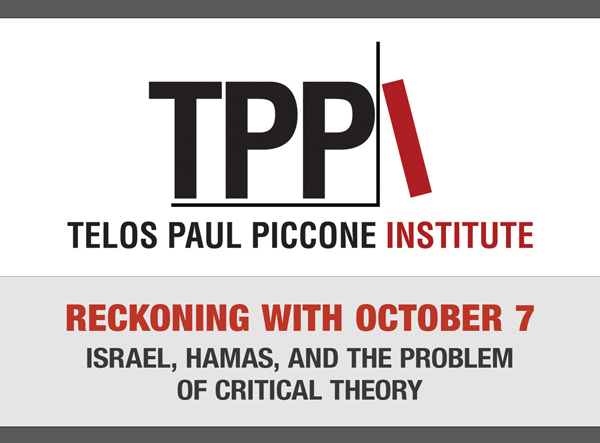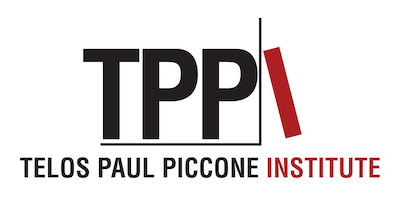 Hamas’s horrifying attack on Israeli civilians is a continuation of terrorist methods that it has been using for years against Israel. As a technique of war, its terrorism functions primarily as a way of gaining support from current and potential allies. Such a massacre can only serve Hamas’s war aims to the extent that the use of terror as a technique of war points to an ideological similarity with its allies, Iran and Hezbollah. Hamas’s use of terror only makes sense because the allies it is trying to convince—anti-Semitic populations and terrorists in the Arab world as well as totalitarians everywhere—share their disregard for principles of human rights as well as their use of fear and hatred as the primary determiners of political life. Terrorism only works for Hamas insofar as it can appeal to similar inclinations in others in order to build a broader alliance of terrorist movements and totalitarian states.
Hamas’s horrifying attack on Israeli civilians is a continuation of terrorist methods that it has been using for years against Israel. As a technique of war, its terrorism functions primarily as a way of gaining support from current and potential allies. Such a massacre can only serve Hamas’s war aims to the extent that the use of terror as a technique of war points to an ideological similarity with its allies, Iran and Hezbollah. Hamas’s use of terror only makes sense because the allies it is trying to convince—anti-Semitic populations and terrorists in the Arab world as well as totalitarians everywhere—share their disregard for principles of human rights as well as their use of fear and hatred as the primary determiners of political life. Terrorism only works for Hamas insofar as it can appeal to similar inclinations in others in order to build a broader alliance of terrorist movements and totalitarian states.
This terrorist approach to politics defines the asymmetry in the conflict between Hamas and Israel. In contrast to Hamas, Israel and its main ally, the United States, are committed to protecting human rights, even in the face of terrorist enemies. Without such self-control, Israel could destroy Hamas by conducting the same kind of indiscriminate killing of Palestinians that Hamas has used against Israel. There is no doubt that if Hamas had the means at its disposal, it would not hesitate to kill the entire population of Israel. But in eschewing such terrorist methods, Israel ends up being attacked for its failures to live up to the human rights principles that it espouses. In its commentary on the conflict, Human Rights Watch focuses primarily on the Israeli siege of Gaza as a war crime while treating Hamas’s massacres of Israelis merely as the work of “individuals” who “should be brought to justice.”[1] Perversely, Israel loses legitimacy due to its general support for human rights, even as it struggles to balance a respect for human rights with its need to fight for its existence against the terrorists and totalitarians that surround it. Meanwhile, Hamas is not considered to be the political leadership of Gaza but as a set of bad individuals to be differentiated from the Gazan population. Clearly, Hamas’s use of Palestinians as human shields indicates how its terrorism translates into totalitarian rule within Gaza. Yet to treat the Palestinians as victims and Hamas as a few bad individuals ignores the political reality that Hamas constitutes the elected political authority of Gaza and recruits its fighters from the Gazan population that supports it.
To defend human rights, it is necessary to understand the distinction between friends and enemies of human rights. While supporters of human rights such as Israel and the United States may sometimes use violent methods and violate human rights principles, their ideological and political structures form the primary foundations of human rights in the world today. Without their influence, there could be no discourse of human rights at all. By contrast, a competing set of political actors, including movements such as Hamas and Hezbollah, as well as the governments of Iran, Russia, and China, are fundamentally opposed to human rights, using murder, genocide, and torture as the basic means for maintaining power, while cynically suggesting that their enemies are the true human rights violators. The Human Rights Watch commentary supports this narrative by focusing attention on Israel rather than Hamas as the true threat to human rights.
As a consequence, Hamas can take advantage of a lack of unity in Europe and the United States regarding the problem of human rights. In spite of the fact that it has been Hamas that consistently targets civilians, human rights advocates such as Human Rights Watch and a part of the left continue to treat Hamas as the victim rather than the primary violator of human rights norms. The calculation by Hamas is that Palestinian casualties will delegitimate Israel’s actions, even though such casualties result from Hamas’s use of civilians as human shields. The goal is to gain the support of allies against Israel, both amongst the supporters of terrorism in the Arab world and amongst the leftist sympathizers with the Palestinians in the West. As a technique of war, then, Hamas’s massacre of civilians is predicated on the importance of an appeal to ideals as the main way to gain allies and undermine the legitimacy of enemies. This centrality of ideology for war today is based on the way in which the world is separating into two alliance networks based on the ideological commitment to either human rights and liberal democracy on the one hand or terror and authoritarianism on the other hand. The authoritarians understand this structure of conflict and have been supporting each other. By contrast, the liberal democracies remain divided, uncertain, and fearful. As other commentators have indicated,[2] it is time for the United States to take clear actions to unify its allies against its adversaries, including in this case Iran.
For more on this topic, you can watch the session on “Changing Techniques of War” from the 2023 Telos-Paul Piccone Institute conference on Forms of War here:
1. Akshaya Kumar, “With Gaza Sealed Off, Palestinians Face Aid Freezes Too: Amid Humanitarian Crisis, Cutting Off Vital Lifeline Would Be Damaging,” Human Rights Watch, October 11, 2023.
2. Kiron K. Skinner and Russell A. Berman, “The Hamas Attack Is a Test for Biden’s Foreign Policy: The White House Needs Realism, Not Idealism, to Deter Iran, Russia, and China,” National Interest, October 10, 2023.









